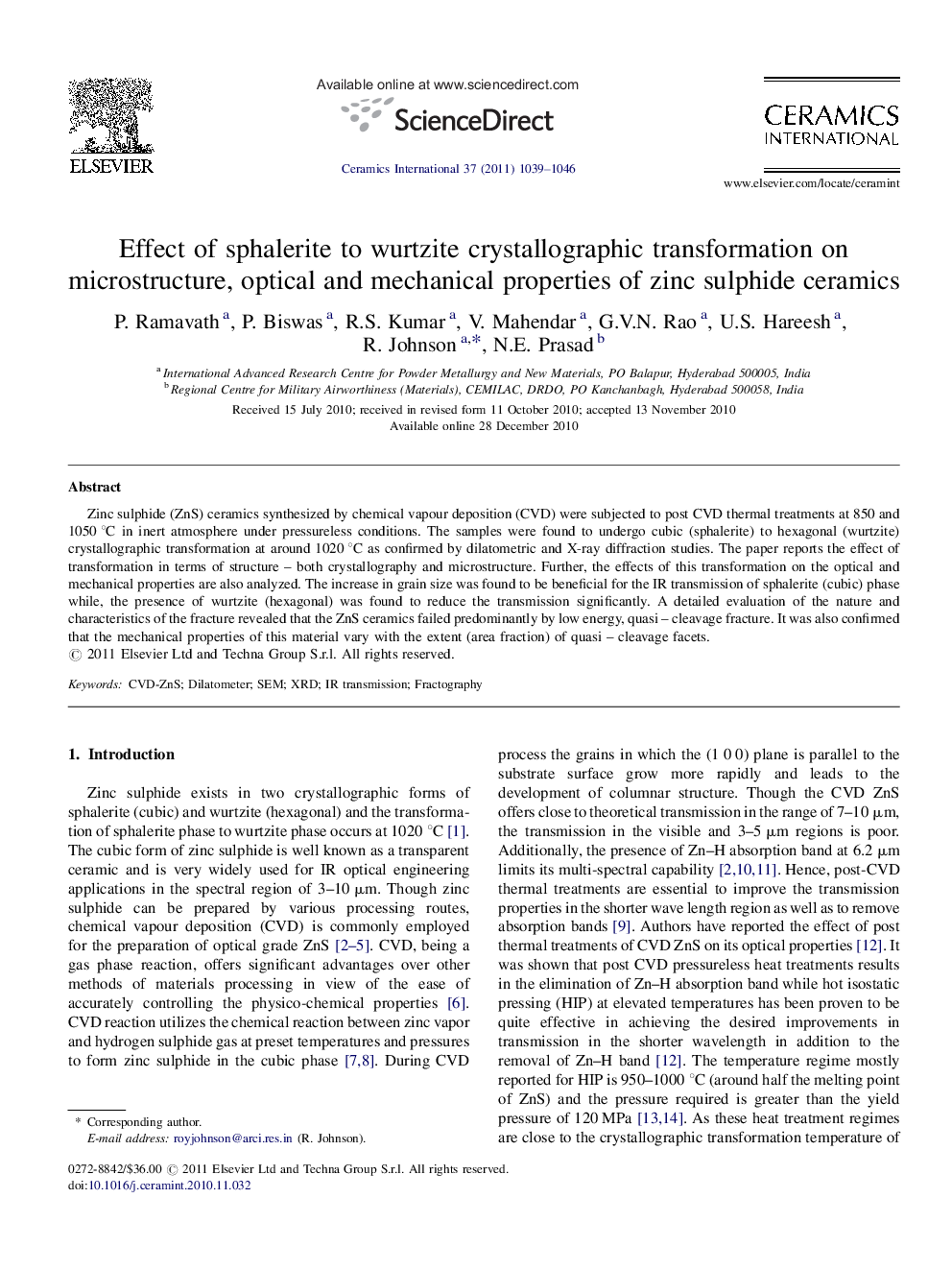| Article ID | Journal | Published Year | Pages | File Type |
|---|---|---|---|---|
| 10626303 | Ceramics International | 2011 | 8 Pages |
Abstract
Zinc sulphide (ZnS) ceramics synthesized by chemical vapour deposition (CVD) were subjected to post CVD thermal treatments at 850 and 1050 °C in inert atmosphere under pressureless conditions. The samples were found to undergo cubic (sphalerite) to hexagonal (wurtzite) crystallographic transformation at around 1020 °C as confirmed by dilatometric and X-ray diffraction studies. The paper reports the effect of transformation in terms of structure - both crystallography and microstructure. Further, the effects of this transformation on the optical and mechanical properties are also analyzed. The increase in grain size was found to be beneficial for the IR transmission of sphalerite (cubic) phase while, the presence of wurtzite (hexagonal) was found to reduce the transmission significantly. A detailed evaluation of the nature and characteristics of the fracture revealed that the ZnS ceramics failed predominantly by low energy, quasi - cleavage fracture. It was also confirmed that the mechanical properties of this material vary with the extent (area fraction) of quasi - cleavage facets.
Related Topics
Physical Sciences and Engineering
Materials Science
Ceramics and Composites
Authors
P. Ramavath, P. Biswas, R.S. Kumar, V. Mahendar, G.V.N. Rao, U.S. Hareesh, R. Johnson, N.E. Prasad,
